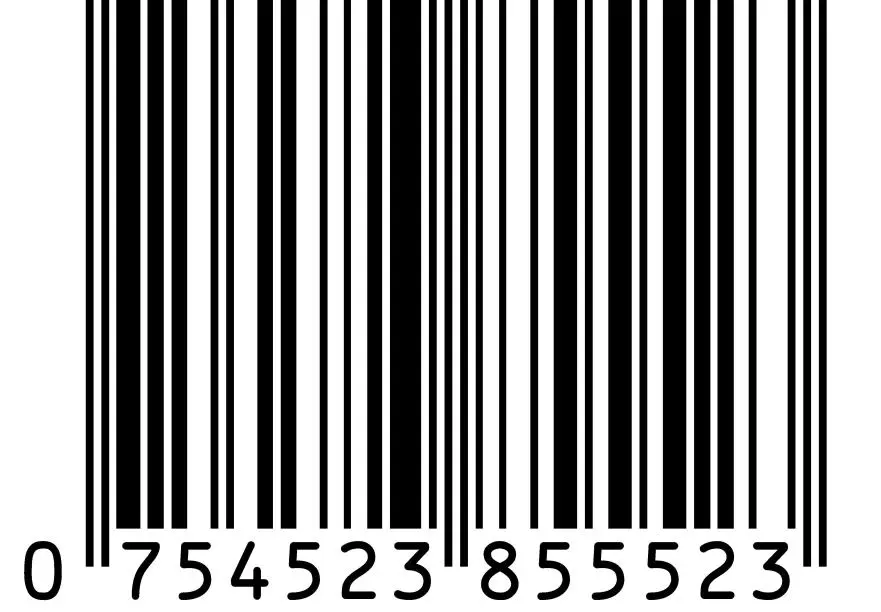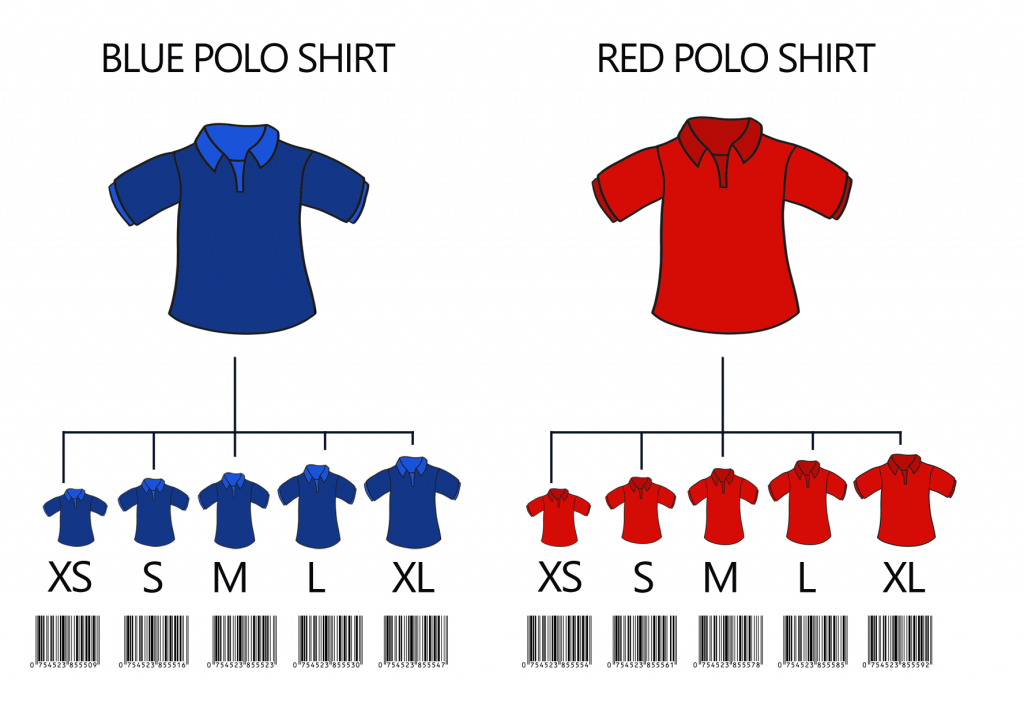Barcoding in 2021 - Introduction and Barcode types
Introduction to Barcode
Barcodes are everywhere in our lives; on almost every single product, pallet, shipping container, box and more recently, through the coronavirus pandemic, QR (barcodes) codes are seen at the entrance of every cafe bar and hairdresser. Even though we probably see a barcode every day of our lives, there are many questions in the minds of small business owners and startups that have never thought before that they would require a barcode for their product. So in this article, we are writing a guide to barcoding in 2021, hoping that it will help educate people and dispel some myths surrounding barcoding.
What is a barcode?
A barcode is simply a visual representation of data in a set of numbers or ASCII characters depending on the type of code.
Below are the common types of barcodes:
 Code 128
Code 128 SSCC (Serialised Shipping Container Code)
SSCC (Serialised Shipping Container Code) ITF-14 'Carton Code'
ITF-14 'Carton Code' EAN-13 (International Article number)
EAN-13 (International Article number) UPC-A (Universal Product Code)
UPC-A (Universal Product Code)QR codes are two dimensional and fall into their own category and not under the umbrella term of "barcode".
The 1D UPC-A was developed by Mr George Laurer in 1971/72 while working at IBM. The code was initially designed for the grocery stores to allow for quicker POS (point of Sale) transactions. The Uniform Grocery Product Code Council accepted George Laurer's proposal in 1973 and implemented the UPC code. Since then, many additions to the 1D barcode family have allowed much more detailed information to be stored in the code. However, the basic structure and use of the barcode has remained unchanged.
What is the function of a barcode?
Barcode is a visual representation of product data in a set of numbers. Every legitimate GTIN (Global Trade Identification Number) or retail EAN or UPC barcode uniquely represents one product in the global marketplace. Every product and product variant must have its own unique barcode. The vertical lines you see are a visual representation of the numbers written below. Each line of different width, and the spaces between the lines represent one of the numbers. When a scanner flashes infrared light at the barcode, it 'reads' the reflected light, then decodes the numbers and takes the last digit of the number sequence called a check digit to confirm a correct read quickly. If the number is connected with data in that scanner's database, that information is recollected. Product information is manually associated with a GTIN in any given POS or warehousing scanner software database for the scan to recollect data.
Barcodes such as the ITF-14, Code-128, and SSCC are considered logistics barcodes and are used on outer cartons, shipping containers and pallets to track products across the supply chain.
The first order of logistics barcode is the ITF-14 (outer carton code), usually positioned on a logistics unit containing multiple units of one or more products for shipping. An ITF-14 is never scanned at the time of checkout or selling products to consumers. It is used only for tracking the products in the distribution chain. The ITF-14 is a superset to the EAN-13 and comprises 14 digits. The EAN-13 is used to generate the ITF-14 of the product; the extra digit in the sequence represents the packaging level on the shipping unit. For instance, if you have a box of 40 units of your product, the box will have the packaging level indicator "1" on it. If the same box is shipped in pallets of 40 boxes, the pallet will have the packaging level indicator of "2" on it. In this way, a scanner will scan the barcode on a pallet and recollect "product A, 40×40 units".
Serial Shipping Container Code (SSCC) are a set of ASCII characters comprised of 14 or 18 digits' code-128' barcode and are used for several advanced barcoding requirements.
For example, when a mixed lot of products are shipped together with different destinations and sources for convenience, that exact shipping container must be traceable. The DoP also use SSCC-18 & SSCC-14 barcodes for tracing packages for delivery.
Retail Barcodes. GS1, resellers
To sell your product in the retail market, most retail outlets and online sellers like Amazon require your product to have either a UPC A or EAN-13 barcode. This globally unique barcode represents your product and will allow your product's movement to be traced through warehouses and scanned at POS. This methodology has been in place since the mid-1970s and, besides recent developments with RFID technology, is still the prevailing system for stock management and POS across the world.
This means that if you want your product(s) to enter the marketplace, then obtaining suitable barcodes to represent them should be your primary considerations. There is a lot of misinformation and competition online, so here we are listing the options for obtaining a barcode, including the pros and cons of each option.
There are two main options for purchasing a barcode for the product:
1. Licensing from GS1
2. Purchasing outright from a barcode reseller
Option 1: Licensing from GS1
GS1 are the global body that issues barcodes. They hold all the patent rights for the EAN 13 & UPC A barcode formats.
Licensing barcodes from GS1 is costly, costs an annual fee, and includes a lengthy signup process, too. After this process, GS1 will issue you a company prefix, and barcode numbers can be generated from this company prefix. You will be solely responsible for generating your own barcode images – a process that you can do on your own with barcode developing software or contract another company to create the barcode images for you.
There are also advantages to purchasing barcodes with GS1
Purchasing barcodes from GS1 will guarantee your product universal store acceptance. Retailers like Reliance, SPAR & Big Bazaar have agreements to accept barcodes licensed from GS1 directly.
Additionally, the primary method for brand ownership verification on Amazon's brand registry platform is the use of GS1's GEPIR database. If your product qualifies for the brand registry platform on Amazon, you must license your barcodes from GS1 directly.
The third advantage of purchasing from GS1 is that GS1 India is the only institution that can issue/license a barcode with the prefix 890. Prefix 890 is the GS1 India country prefix. It does not specify where a product is made or mean where a product can be sold. All EAN 13 and UPC A barcodes are valid for use globally.
Option 2: Purchasing Barcodes directly from a Barcode Re-Seller
This section has a little history to know. In 2002 GS1 licensing EAN 13 barcodes annually – consumed the UCC – who used to sell UPC barcodes exclusively in packages of 100,000 outright to their customers for a once-off fee. GS1 opted to continue their licensing agreement rather than honouring the ownership of all UCC codes owned by the customers, which resulted in a class-action lawsuit. This class action resulted in companies who bought their prefixes before Aug 2002 were considered the owners of their codes and not subject to the GS1 licensing agreements.
Due to the nature of the UCC agreement, some companies that may have only needed one barcode had an extra 99,999 barcodes spare that had never been assigned to a product. These are the barcodes that are sold by reputable barcode resellers today. They fall under the UCC agreement, which is that the barcode ownership is forever and ownership of the codes is legally allowed. This way, resellers can provide barcodes at a fraction of the cost of GS1.
Barcode resellers provide their customers with barcodes prefixed in the range 060 – 089 as these are UCC era prefixes. The UCC only issued UPC barcodes and added the '0' to convert them to an EAN-13 format. However, the '0' is a cosmetic issue only and has no bearing on where a product is made or where a product can be sold. All genuine barcodes are valid globally.
How many barcodes do you need?
Each GTIN or Barcode number represents one unique product in the world. This includes product variations like size, weight, colour, volume, style etc. For example, if you have two products: product A and product B and product A is sold in 3 different weights, while product B is just one weight, you would require 4 barcodes to cover that inventory. The below example illustrates how two colours of polo shirts (BLUE and RED) at 5 sizes each need a total of 10 unique barcodes.

In the next article, we'll discuss how to obtain a barcode and the detailed procedure.
Related Articles
Barcode Registration in India and its benefits
Barcode Registration in India Barcodes are machine-readable symbols in the form of numbers and parallel lines used universally to identify and track products. Barcodes play a key role in supply chains, enabling retailers, manufacturers, and transport ...Obtaining your barcodes- Detailed procedure
In the previous article, we covered the two main options for purchasing barcodes. In this article, we will present how you can obtain a barcode from either GS1 or a respectable barcode reseller, India Barcodes, in this case. Obtaining a barcode from ...Music License in India – Benefits, Types and Procedure
Music License in India – Benefits, Types and Procedure It is always refreshing to let your customers listen to some good music when you are dining out with their family and friends. You make various arrangements to entertain your customers by playing ...Types of GST Returns and Due Dates
Types of GST Returns GST return is a form that a taxpayer registered under the Goods and Services Tax (GST) law must file for every GSTIN that he is registered. Did you know that there are 22 types of GST returns prescribed under the GST Rules? Out ...NGO - Eligibility, Types and Benefits
NGO - Eligibility, Types and Benefits NGOs in India An NGO or Non-Governmental Organization is basically a non-profit or not for profit organization which strives to work towards the betterment of the underprivileged sections of Society. NGO’s could ...